What are the Subdivisions of Nasal Cavity?
Nasal cavity is subdivided into:
Vestibule (V)
- Anteroinferior part of nasal cavity.
- Lined by skin (has sweat & sebaceous glands and coarse hair (vibrissae))
Proper nasal cavity which is further subdivided into two areas
- Olfactory area (O): lined by olfactory epithelium contains receptors for smell.
- Respiratory Part(R): lined by pseudostratified ciliated columnar epithelium.
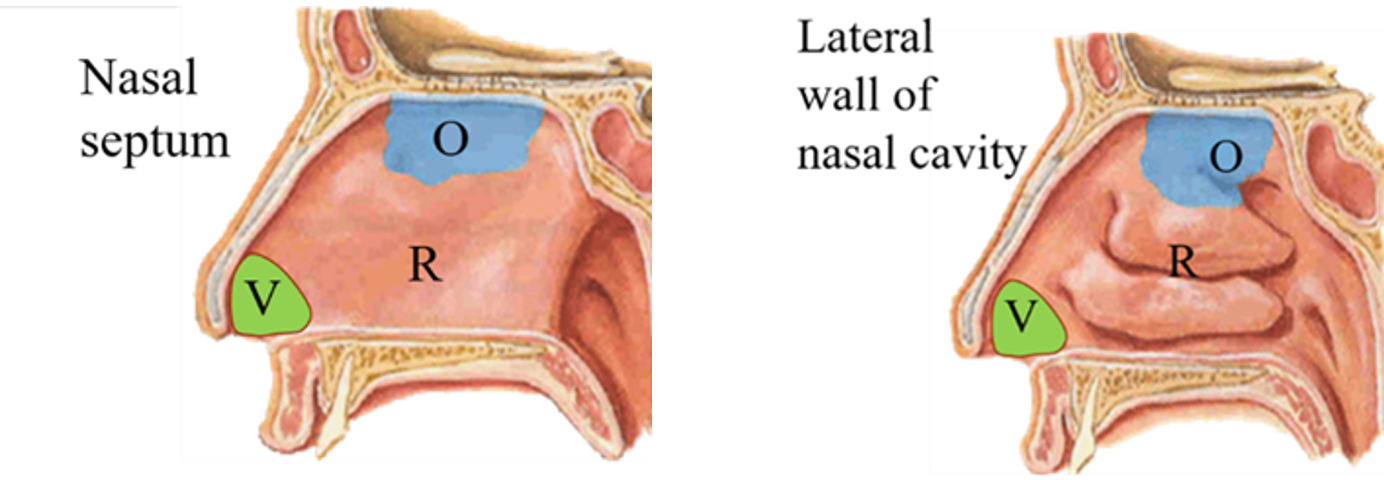
Describe the walls of Nasal Cavity
Roof
It is divided into three parts:
- Frontonasal part – is sloping and is formed by nasal cartilage, nasal bone and frontal bone.
- Ethmoidalpart – is horizontal and is formed by cribriform plate of ethmoid bone.
- Sphenoidalpart – is also sloping and is formed by body of sphenoid bone.
Floor
It is formed by
- Palatine process of maxilla.
- Horizontal plate of palatine bone
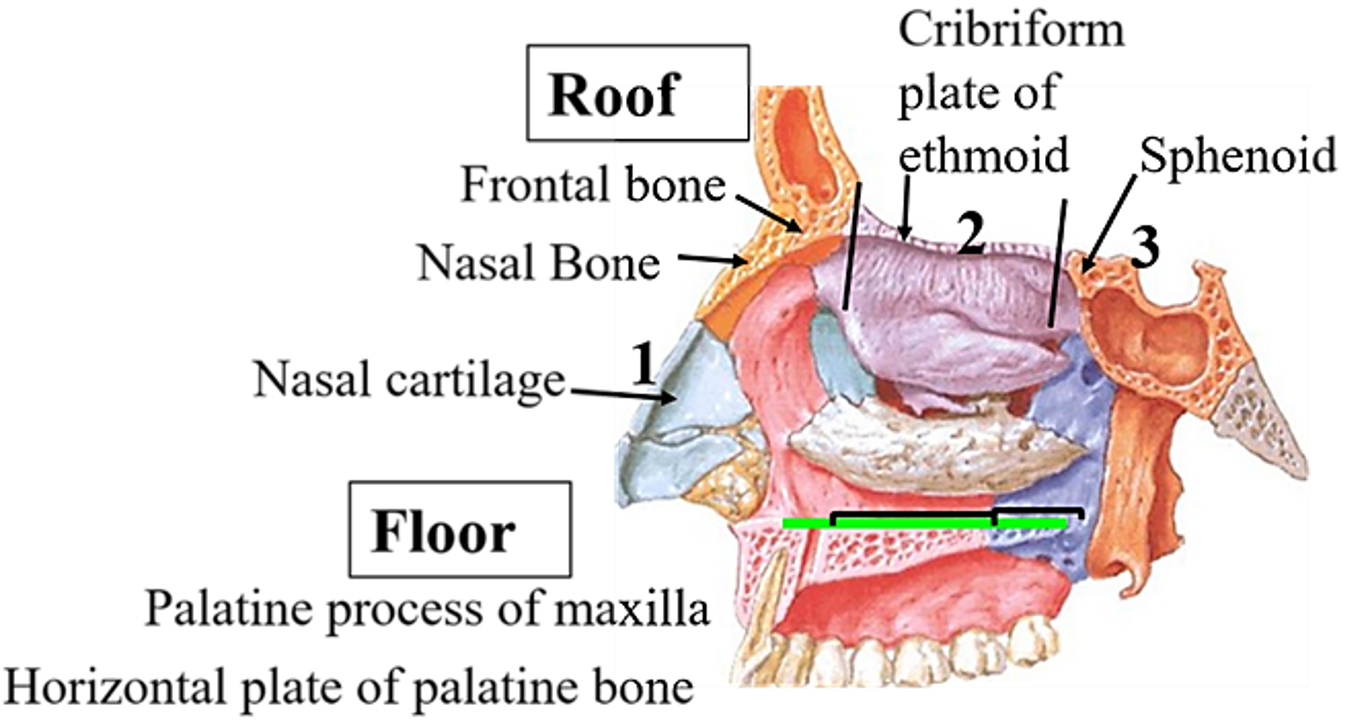
Medial Wall (Nasal septum) of Nasal Cavity
It is an osseocartilaginous partition between the two nasal cavities. Following bones and cartilages form nasal septum:
Bones:
- Perpendicular plate of ethmoid bone
- Vomer
- Small contribution from the processes of frontal, maxillary, nasal and palatine bones.
Cartilges:
- Septal cartilage
- Septal processes of major alar cartilages.
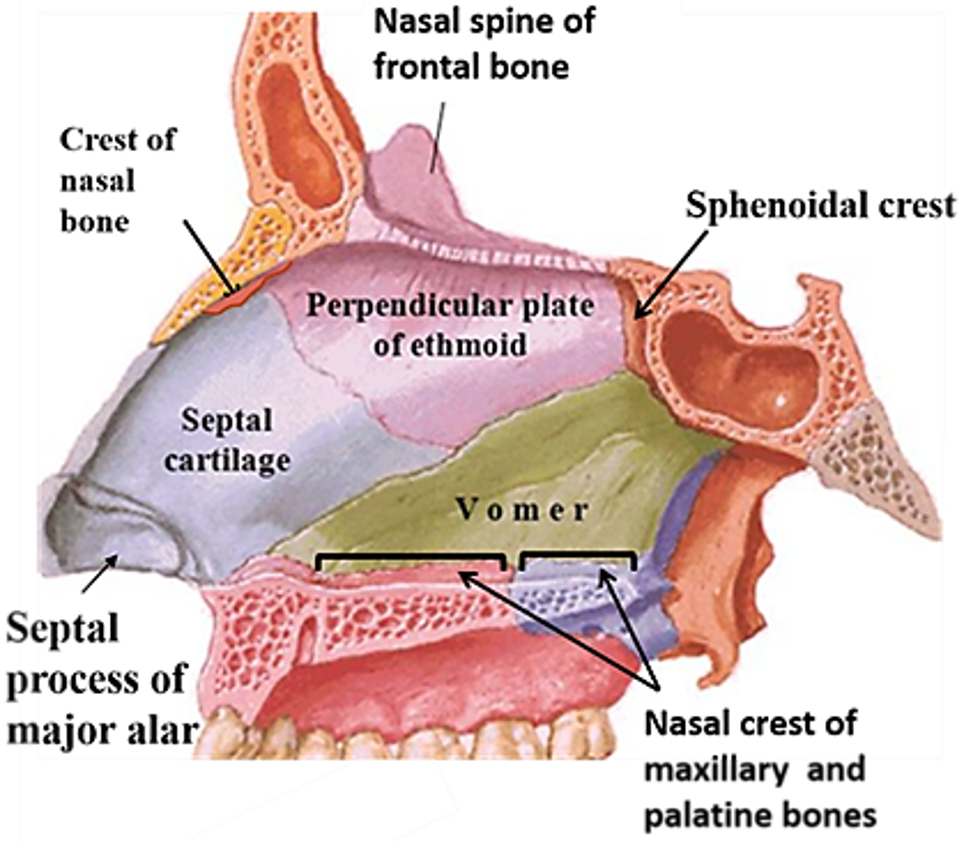
Lateral Wall of Nasal Cavity
Bones and cartilages forming lateral wall of nose are: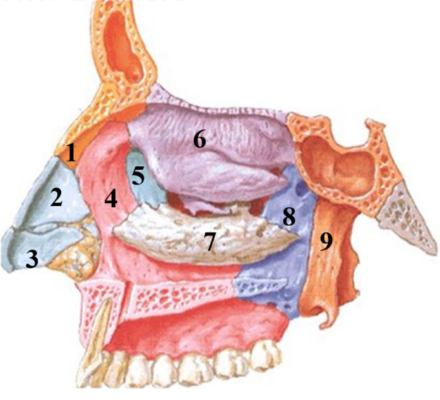
- Nasal bone
- Lateral nasal cartilage
- Major alar cartilage
- Maxilla
- Lacrimal bone
- Ethmoid (superior and middle chonchae)
- Inferior nasal concha
- Perpendicular plate of palatine bone
- Medial pterygoid plate
Lateral wall of nasal cavity has
- Three shelf like projections called Chonchae – Superior, middle and inferior nasal chonchae.
- Three meatuses (superior, middle and inferior) – the spaces underneath and below the chonchae.
- Sphenoethmoidal recess above the superior choncha.
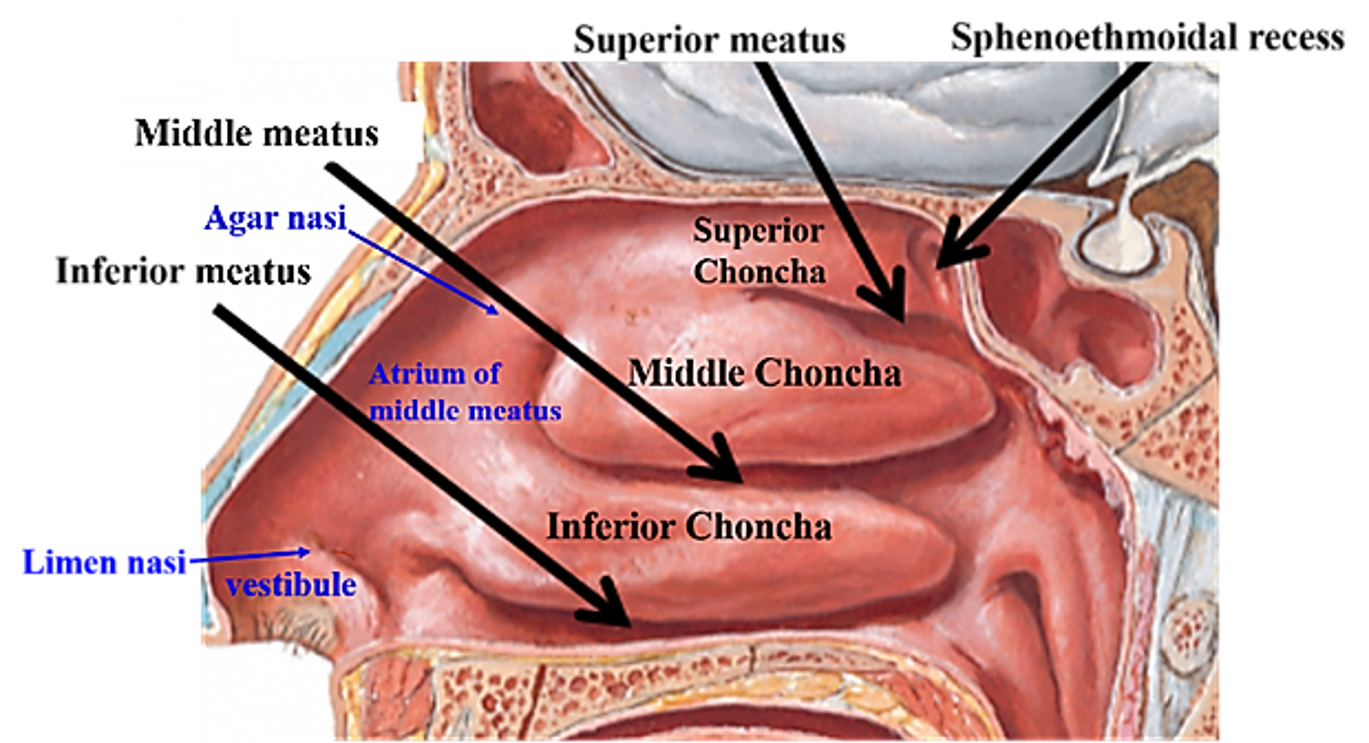
Name the Structures Opening into the Lateral wall of Nasal Cavity.
| Site | Opening/s | |
|---|---|---|
| Sphenoethmoidal recess | Sphenoidal air sinus | |
| Superior meatus | Posterior ethmoidal sinus | |
| Middle meatus | On bulla ethmoidalis | Middle ethmoidal air sinus |
| In hiatus semilunaris | Frontal air sinus | |
| Anterior ethmoidal air sinus | ||
| Maxillary air sinus | ||
| Inferior meatus | Nasolacrimal duct |
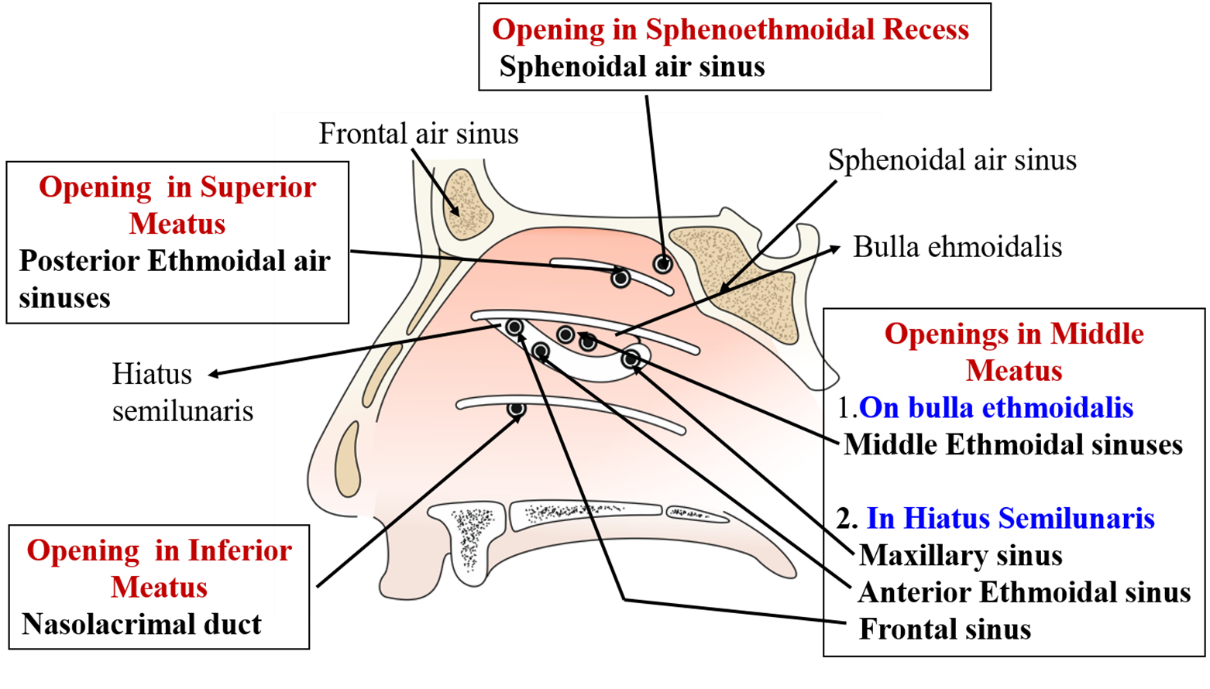
Describe the Arterial Supply of Nasal Septum.
Arterial supply of nasal septum is as follows:
- Anterosuperior part of nasal septum is supplied by anterior and posterior ethmoidal arteries.
- Posterosuperior part is supplied by sphenopalatine artery.
- Anterosuperior part is supplied by superior labial branch of facial artery.
- Posteroinferior part is supplied by greater palatine artery.
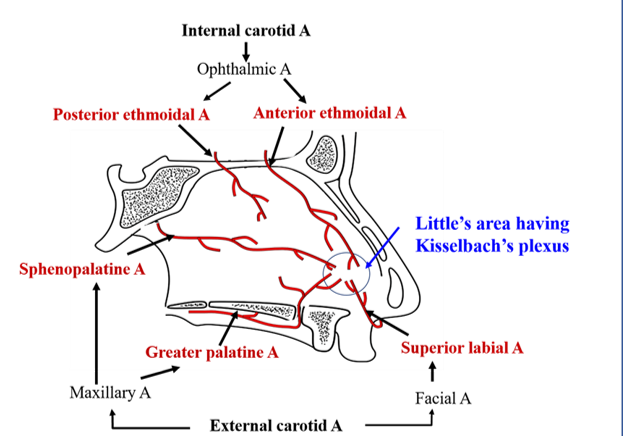 L
L
What is Kisselbach’s Plexus and Little’s area?
Kisselbach’s plexus
It is the rich anastomosis between the anterior ethmoidal, sphenopalatine, superior labial branch of facial and greater palatine arteries in the Little’s area.
Little’s area
This is an area in the anteroinferior part of nasal septum, where Kisselbach’s plexus is present( anastomosis between branches of four arteries viz. anterior ethmoidal, sphenopalatine, superior labial branch of facial and greater palatine) anastomose. This is a common site of bleeding (epistaxis).
Draw Labelled Diagram to Show Nerve Supply of Nasal Septum and Lateral Wall of Nasal Cavity.
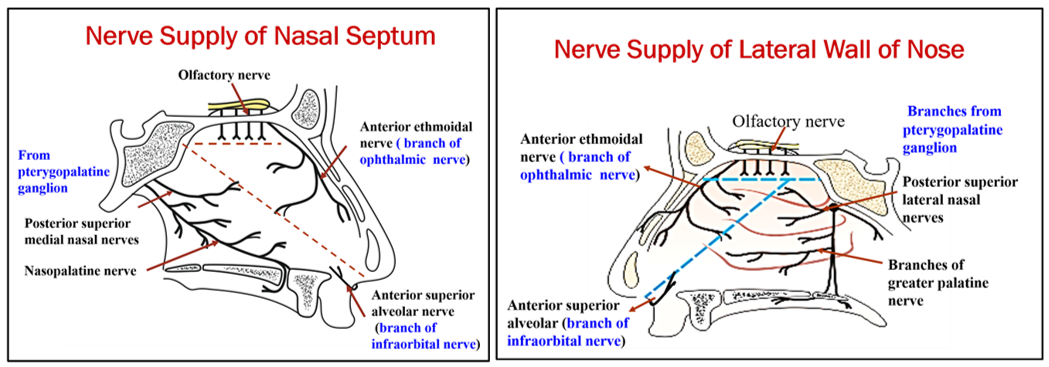

This information presented was helpful in clarifying my notes. Thank you!
Awesome